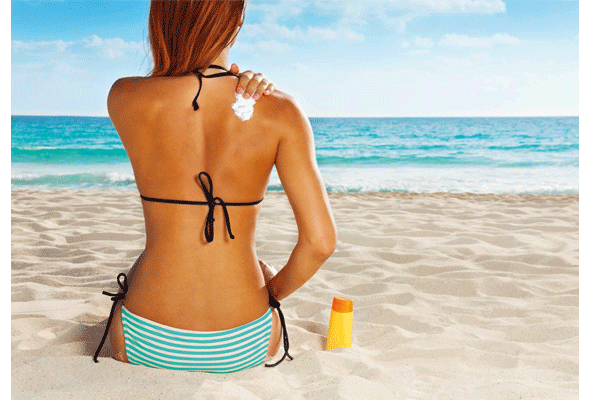Even if you load on the sunscreen before heading out, you’re getting way more skin damage than you think, finds new research. Here’s how to protect and preserve.



This is a good news-bad news scenario: Nearly half of women wear sunscreen daily on their face, and more than a third regularly use it on other exposed areas, according to a 2015 survey of over 4,000 people published in the Journal of the American Academy of Dermatology. And those numbers are on the rise among active young women.
Evidence is clear that a broad-spectrum sunscreen, which fends off UVA and UVB rays, prevents wrinkles and helps reduce the incidence of skin cancer – 90 per cent of which is UV ray-related. Even the incidence of melanoma, the most deadly type of skin cancer, drops as a direct result of regular sunscreen use.
Despite this, skin cancer numbers in people of all ages are going up, and melanoma is increasing faster in females ages 15 to 29 than in males in that same age group. In fact, an estimated 34,940 new cases of invasive melanoma in all women will be diagnosed in the US in 2017, according to the Skin Cancer Foundation. The uptick is due in part to more awareness, experts say. People today know the warning signs of skin cancer, so they are more likely to visit a dermatologist, which leads to an increase in diagnoses.
This is, of course, what should be happening since “early treatment leads to increased survival,” says Dr Hooman Khorasani, chief of the division of dermatologic and cosmetic surgery at the Icahn School of Medicine at Mount Sinai Medical Center in New York City. But other factors are at play that most directly affect outdoorsy women . For starters, a spike in travel may be partly to blame for the increase in cancer, Dr Khorasani says.
Today, air travel is cheaper and more available than ever, so people fly to areas where they can be outdoors all year round, swimming, hiking, biking, and marathoning.
Plus, the thinning ozone layer is making the sun’s effects stronger, and although we think we’re being diligent about wearing sunscreen correctly, it turns out we likely aren’t. But this is no reason to stop exercising outdoors: You just need to safeguard your skin with these expert-endorsed ideas.
Embrace the big 3-0 You’ve likely heard that SPF15 is the magic number, which is fine for brief walking-around coverage. Otherwise, if you’re going to be outside for more than an hour, you need an SPF30 or higher; SPF15 blocks 93 per cent of the sun’s rays, whereas SPF30 blocks 97 per cent, says Dr Steven Wang, the director of dermatologic surgery and dermatology at Memorial Sloan Kettering Cancer Center in Basking Ridge, New Jersey.
“That may not sound like much of a difference, but when you focus on the percentage of rays that are still getting through – 7 per cent versus 3 per cent – you will see that SPF30 is more than twice as effective, and that adds up,” he says.
The second reason for a higher SPF: “People don’t apply enough sunscreen. A higher SPF helps compensate for that,” says Dr Elizabeth Hale, a dermatologist and senior vice president of the Skin Cancer Foundation in the US.
Double up To get the promised SPF of any product, you need to apply a full shot-glass amount (30ml) of sunscreen to your body when you’re in a bathing suit. Of course, most people don’t have a shot glass around when they’re applying sunscreen, so Dr Hale says that an equally effective, if less scientific, approach to getting sufficient coverage is to spread two coats onto all exposed parts. If you’re using a spray, be sure you can see an even sheen on your skin.
Be selective Not all sunscreens live up to their SPF claims, even when applied appropriately. Last year, Consumer Reports, an independent, US-based, non-profit organisation, tested more than 60 products with SPF30 or higher, and found that 43 per cent did not meet the SPF stated on the bottle; a few products fell so short, they didn’t even hit SPF15. The worst offenders were the mineral sunblocks with zinc oxide, titanium oxide, or both.























